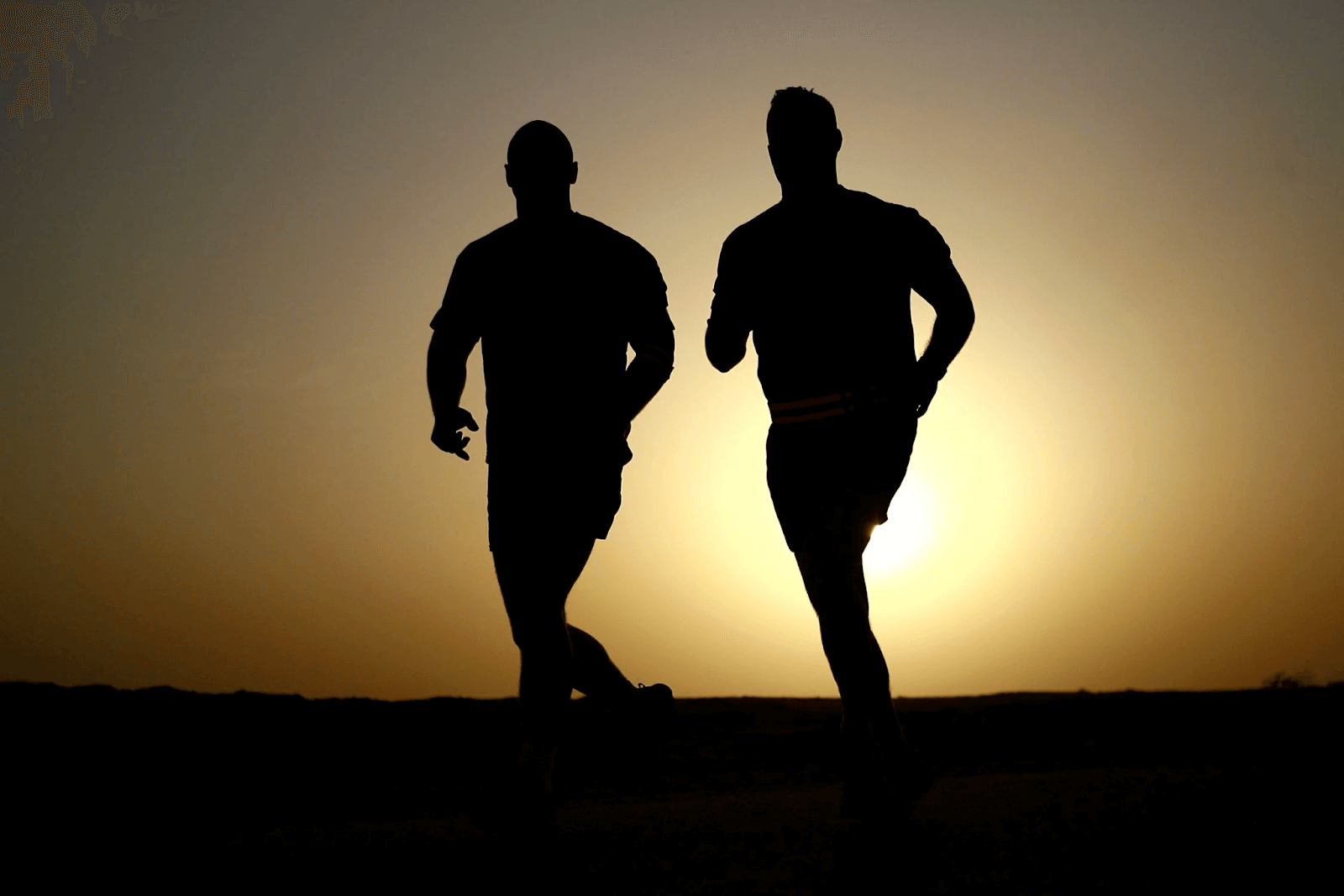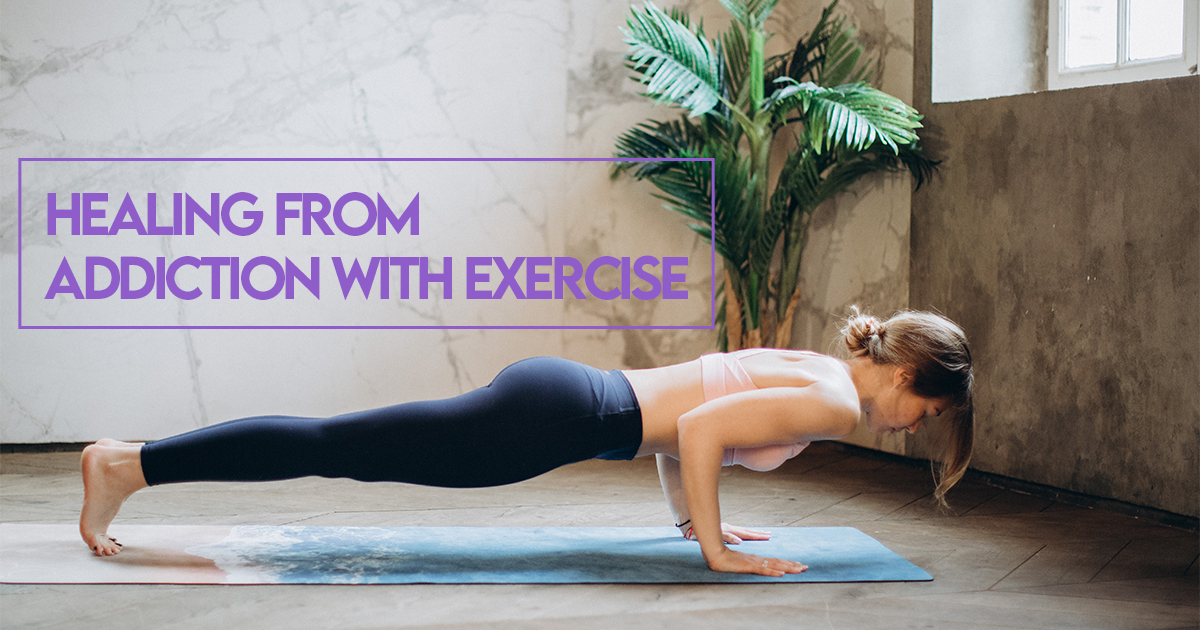Physical movement and exercise therapy can be a powerful way to heal during addiction recovery and improve your quality of life.
While there are enormous benefits to making physical movement part of your routine in your recovery journey, you also have to be careful about excessive exercising. There is the potential for some people in recovery to replace one addiction with another. Exercise addiction can become a real risk, as can other behavioral addictions.
Your recovery is about finding a sense of healthy balance in all areas of your life, including those things that are good for you.
Below, we talk more about the benefits of exercise in recovery and how to avoid making it something that becomes a problem.
What are the Benefits of Exercise When You’re Recovering from Addiction?
According to the American Psychiatric Association, when you’re excessively using drugs or alcohol, it affects your mind and your body. Substance use disorders change the chemistry of your body. These changes are why it’s common to feel depressed, anxious, or mentally “off-balance” when you stop using drugs or alcohol.
Engaging in regular movement can help restore your body and brain chemistries to what they were previously. This helps with addiction and co-occurring disorders such as depression or anxiety.
- In research, animal studies show regular swimming reduces the voluntary consumption of morphine in rats dependent on opioids.
- Access to an exercise wheel reduces cocaine use in dependent rats.
- A small human study looked at the impact of exercise on men and women abusing different substances. Participants did group workouts three times a week for two to six months.
A year later, five of twenty participants said they were abstinent from substances, and 10 reported a reduction in substance use.
In observational and anecdotal evidence, people with substance use disorders often find exercise helps reduce cravings and adds structure to their daily schedules, whether they’re doing aerobic exercise, strength training, yoga, or other forms of exercise.
Yoga
Yoga Journal characterizes yoga as a sequence of physical postures executed to connect mind, body, and breath, sending thoughts inward. Research shows that the practice can relieve stress, strengthen muscle, diminish pain, improve sleep, and increase energy levels. According to a 2012 study conducted by the National Center for Complementary and Integrative Health, over 80% of subjects who regularly practiced yoga reported reduced stress as a result of the activity. By balancing the production of stress hormones like cortisol and adrenaline, yoga can mitigate symptoms of stress like increased heart rate, blood pressure, and body temperature.
Meditation
Like yoga, meditation can reduce stress, relaxing both mind and body. Meditation can be guided by the self or by an outside party and the practice can be solitary or performed with a group of people. Most meditation sessions share the common principles of quietude, comfort, internal focus, and an open mind. Repetition of a mantra or phrase is the central activity of meditation. You should accept all thoughts and feelings that arise during meditation with understanding and respect but always return to the original mantra. Yoga classes typically last from 30 minutes up to an hour and a half, but meditation does not need to last for any set amount of time.
Specific ways getting physical movement benefits recovery and mental health include:
- Stress reduction. Stress can be a big problem in addiction recovery. When you’re in recovery, especially at first, you’re learning how to navigate daily life without substances as a coping mechanism. It can be overwhelming. Movement helps control stress through the release of endorphins and improvements in circulation. You can eventually use working out as a primary coping mechanism in difficult times or when you’re feeling any emotional distress.
- Sleep improvements. Sleep disturbances are very common in addiction recovery. Regularly exercising helps you get more sleep and promotes higher-quality sleep as well. You can move toward a more normal sleep schedule.
- Improved mood. Your mood is heavily affected by substances and the changes in your brain during recovery. When you move, you’re improving your mood by helping your body produce natural feel-good chemicals that promote a sense of well-being and happiness. According to the Mayo Clinic, exercising thirty minutes a day is enough for positive effects on mood. Similar benefits come with therapeutic movement and working out if you have a mental disorder.
- Better energy levels. It requires energy to get physical activity, but it also raises your levels. If you’re feeling tired or lethargic, being physically active can help give you a greater sense of vitality.
- Regular movement helps prevent relapse. Looking at a collection of studies, exercising regularly increases the abstinence rate for substance use by as much as 95%.
Benefits of Mindfulness-Based Meditation for Anxiety Disorders and Addiction
From a scientific point of view, meditation therapy for anxiety disorder directly affects the brain’s neurotransmitters (chemical messengers), which in turn has shown to reduce stress and anxiety. This form of treatment is also known to release endorphins throughout the body – reducing pain and increasing a feeling of calm. Here are some additional benefits of mindfulness for anxiety disorders, especially for those in addiction recovery:
- It allows the individual to examine the internal reason for the anxiety in their physical body in order to arrive at the root cause of the issue.
- It helps individuals to observe thoughts without judgment and eventually learn to understand them better.
- Encourages being aware of actions in the present and supports letting go of the past.
- Induces relaxation, increases blood flow, boosts mental clarity, and helps promote better sleep.

What About Exercise Addiction?
According to health professionals, the risk of exercise addiction or compulsive exercise is small in recovery from drugs and alcohol but still present.
Sometimes people in recovery will substitute one addiction for another. This can include becoming compulsively involved in certain activities like going to the gym or even working at their job. These can be otherwise healthy activities, as long as you aren’t transferring addiction.
Your goal in addiction recovery is to live a sober life that you’re in control over rather than being driven by compulsive behavior.
Your long-term sobriety can be negatively affected if you turn to work out as a substitute for your previous addictive behaviors.
When you go to treatment and follow your aftercare plan, your counselor or treatment team will focus on creating balance in your life to avoid things like an obsession with exercise.
What Is Exercise Addiction?
An addiction to workouts is an obsession with physical fitness that’s unhealthy. While it can result from eating and body image disorders, it can also occur in someone without a history of either. Researchers aren’t sure of the prevalence of exercise addiction or how high the risk for exercise addiction is because it’s difficult to diagnose.
If you develop an addiction to working out, your symptoms could be similar to those of your substance addiction.
Signs of drug addiction can include obsessing over exercise and continuing to do it even if it’s causing harm, like an injury. You could keep up high levels of exercise even though you don’t feel like you want to, and you might become secretive or deceptive about it. Intense exercise sessions could begin to create negative effects on your mental and physical health.
When you’re physically active, it triggers a release of chemicals into your nervous system, leading to a feeling of reward or pleasure. You could become dependent on your body’s pleasure response.
Just like substances, the same neurotransmitters are being released as you’re physically moving your body, and when you stop, those go away. You may want to do more to trigger the same chemical release.
Symptoms of addiction or problematic exercise habits include:
- Not being able to follow a reduced routine
- Skipping other activities to have more time to exercise
- Withdrawal symptoms after not working out
- Feeling a buzz or high after you do a workout
- Exercise addicts may have uncontrollable desires to do certain physical activities
- Spending a lot of time preparing for, engaging in, and recovering from your workouts
If you’re experiencing problematic symptoms, talk to your counselor or therapist. There are ways to moderate your physical activity but still enjoy the benefits it brings to your mental and physical health.
If you’re early on in your recovery from alcohol or drug addiction, avoid being excessive in how often you go to the gym. Set limits for yourself that you can follow, and make sure you’re giving your body plenty of time to rest.
Getting Addiction Treatment in Huntington Beach, CA
Holistically, exercise therapy can be one of the most important parts of your recovery from addiction. However, everything in your sober life requires balance, including a healthy activity like working out. A balance in all things defines a healthy lifestyle.
Be mindful of the potential for an addiction to certain behaviors to replace your addiction to drugs or alcohol.
If you’d like to learn more about addiction treatment options in Southern California, call 833-844-4769 and the Silver Lining Recovery team will be able to answer any questions you might have. We can also provide information about excessive behavior in general.

